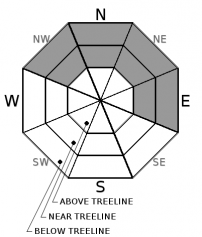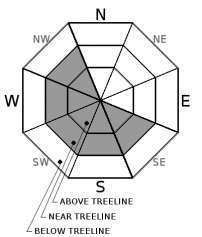| Saturday | Saturday Night | Sunday | |
|---|---|---|---|
| Weather: | Sunny skies. | Partly cloudy skies. | Partly cloudy skies. |
| Temperatures: | 46 to 51 deg. F. | 31 to 36 deg. F. | 50 to 55 deg. F. |
| Mid Slope Winds: | ENE | Variable | Variable |
| Wind Speed: | Generally light winds with gust up to 30 mph in the morning. | Light winds | Light winds |
| Expected snowfall: | 0 | 0 | 0 |
| Saturday | Saturday Night | Sunday | |
|---|---|---|---|
| Weather: | Sunny skies. | Partly cloudy skies. | Partly cloudy skies. |
| Temperatures: | 44 to 49 deg. F. | 33 to 39 deg. F. | 47 to 52 deg. F. |
| Ridge Top Winds: | ENE | Variable | Variable |
| Wind Speed: | 10 to 15 mph with gusts to 35 mph in the morning, becoming light. | Light winds | Light winds |
| Expected snowfall: | 0 | 0 | 0 |


























